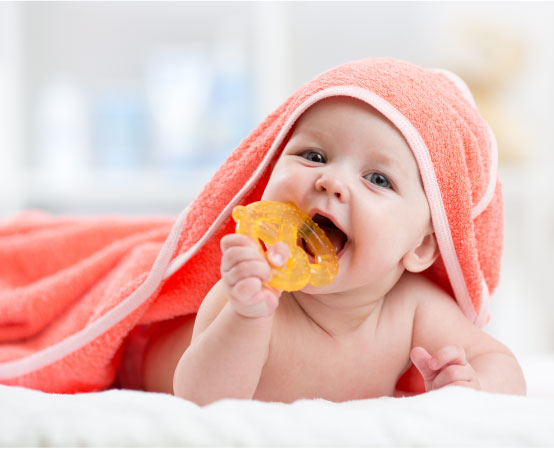

Baby Bath Time
Bath time can be a fun time, for both you and your baby. It is a pleasant experience for baby to kick and move about unrestricted by clothes. It is also a good time to talk to your baby and loosen yourself up. Add water toys for fun. Join him in fun through sounds and music.Encourage him to make eye contact with you. Always take precautions about a baby’s safety first.
Safety Tips
Safety tips to remember when you give your baby a bath:
- Organize yourself before you start the procedure. Keep all the things you will need at arm’s length before you start to give bath.
- Choose a warm place to give your baby a bath. Try to use an area free of wind drafts.
- Bath water temperature should be just above 100 F. If you do not have a bath thermometer, test the water with your elbow not your hand. When you put your elbow in the water, it should feel warm, not hot. This is necessary to prevent the baby from having hypothermia or burning.
- Soapy babies are slippery. Keep firm hold on your baby during bath.
- Keep your hand to always support your baby’s head firmly.
- Use around 3 inches on water in the tub. Newborn don’t need a lot of water. Overfilling a tub can be a safety hazard.
- Never leave your baby alone during the bath, not even “for a second.” Children can quickly drown in only one inch of water.
How to Bathe Your Baby
- Eyes: Wash baby’s eyelids gently with the corner of a soft washcloth or cotton wool and clean water. Start at the inner corner of the eyelid and wash toward the ears. Use a fresh corner of the washcloth for each eye.
- Face: Using a soft washcloth, wipe your baby’s face with clean water. Don’t use soap on his face.
- Ears: Wash the outer part of each ear with a washcloth moistened with clear water. Pat ears dry. Do not put anything inside of a baby’s ears like cotton swabs (ear buds).
- Hair and scalp: Rest baby’s buttocks on your hip while supporting his head on your forearm. Holding your baby this way gives him a sense of security. Wet baby’s head with clear water. Using a small amount of baby shampoo and water, make a soapy lather. Put a small amount of soapy lather on his head, including the “soft spot.” Rub very gently in a circular motion. Wash with cupped water in your hand over bathtub or a wet washcloth to wipe away the shampoo. When all the soap is off, pat his head gently with a towel to dry.
- Body: Place your baby in the tub. Start at the neck and lather your baby’s entire body with a gentle soap. Be sure to clean in between skin folds, fingers and toes, and the genital area. ( Do not pull back the foreskin on penis to clean it. This could cause injury. In case of girl child, wash from top to bottom). Rinse the soap off with a wet washcloth. A soft towel should be used to pat dry. Use an adult towel if your baby cries after bath. Most baby towels are too thin and can make a baby feel cold.
- Do not use powder or oil after bath as it could clog a baby’s pores. A baby has natural oil secretion. Adding oil could affect natural secretion.
- File nails immediately after bath as nails are softer. Baby’s are mostly relaxed after bath so it is easier to file their nails.
- Brush your baby’s hair with a soft brush. This adds to a soft massage helping the baby relax.
Special Scalp Care
A baby’s scalp is sometimes dry and flakey. This is normal. A small amount of baby oil and shampoo can clear it. Apply baby oil after shampooing. Leave it on until the next day. Brush hair and scalp well to remove skin flakes, and then shampoo your baby’s hair.
You can repeat the above process. However, try to remove excess flakes by gently combing hair. Excess shampooing could cause the scalp to dry and aggravate the situation.
If scalp does not look normal to you, consult your child’s doctor.
Keep your baby’s brush and comb hygienic. Wash the brush and comb with soapy water, rinse, and dry. Use it only for your baby.
Recent Posts
- The Future of Green Business: Embracing Sustainable Solutions in Thailand
- Choosing the Right Baby Products Manufacturer in Thailand: What Global Brands Need to Know
- Plastic Injection Molding in Thailand: Benefits, Process, and Industry Insights
- Top Qualities to Look for When Choosing Mold Makers in Thailand

 August 22, 2023
August 22, 2023